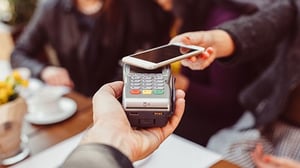Mistakes to Avoid When Transferring a Credit Balance
Balance transfer credit cards can help you get out of high-interest debt quickly and efficiently. You may have received offers for these types of...
Our branches will be closed on 1/19/26 in observance of Martin Luther King Jr. Day. We will re-open with normal business hours on 1/20/26. Thank you!
First Federal Bank will never call, text, or email you to ask for your online banking username, password, or security codes. If you receive a call from someone requesting this information, do not provide it. Call 877-499-0572 for assistance.
Manage your everyday finances with convenient accounts, flexible cards, and personalized service designed to fit your life.
At First Federal Bank, we offer flexible mortgage solutions for almost any situation, helping you secure the right financing for your dream home.
Business banking offers secure financial management, streamlined transactions, credit options, and tools to help businesses grow efficiently and sustainably.

 Contactless credit cards, also known as tap-to-pay cards, have begun cropping up all over the country. You may have already seen compatible card readers at your local coffee shop or fast-food restaurant that feature a somewhat familiar graphic resembling that of a volume icon without the speaker, the same associated with NFC (near field communication) technology.
Contactless credit cards, also known as tap-to-pay cards, have begun cropping up all over the country. You may have already seen compatible card readers at your local coffee shop or fast-food restaurant that feature a somewhat familiar graphic resembling that of a volume icon without the speaker, the same associated with NFC (near field communication) technology.
Learn more about how these next-generation credit cards work, whether they are secure and how a small business could start accepting them.
How do contactless credit cards work?
Contactless credit cards are chip cards that feature embedded NFC technology, enabling you to pay over a secure radio interface without swiping the magnetic stripe or inserting the chip. “The tech involved is deceptively simple,” says Cameron Faulkner in an article for TechRadar. “Evolved from radio frequency identification tech, an NFC chip operates as one part of a wireless link. Once it's activated by another chip, small amounts of data between the two devices can be transferred when held a few centimeters from each other.”
This is the same technology used by smartphone-based mobile wallets such as Apple Pay and Android Pay. With mobile wallets, you store your credit card information in an app that then uses the NFC tech to securely send the info to a nearby card reader. Contactless credit cards essentially do the same thing but cut out the smartphone to simplify the process.
How should I use contactless credit cards?
According to VISA, one of the credit card companies responsible for developing and maintaining NFC technology, the presence of a “Contactless Indicator” — the volume-like icon described above — indicates acceptance. “When featured on a card, it means the card can be used to tap to pay. When featured on a checkout terminal, it means a merchant accepts tapping to pay,” VISA says.
Thankfully, just because a card and a reader have a Contactless Indicator doesn’t mean they are always busy receiving or sending secret transactions via NFC technology. To make a transaction, you need to tap your contactless-enabled card on the “Contactless Symbol,” which looks like the Contactless Icon combined with a pointing hand. Your card needs to be within 1-2 inches of the Contactless Symbol to initiate a payment, which will then take only about one to two seconds to process.
Are contactless credit cards secure?
When you tap your contactless credit card, it creates a cryptographic code unique to the card and to the transaction. This makes it virtually impossible for fraudsters to skim your credit card information, which is one of the vulnerabilities of magnetic stripes. “The cryptogram can only be decoded by your bank to validate your transaction. It cannot be replayed,” says Jack Jania, senior vice president of strategic alliances at Gemalto, a leading provider of contactless cards. “The bank decides, ‘This is one of my cards, and this is one of my clients’ transactions.’ It’s a handshake between the point-of-sale terminal and the card issuer.”
Additionally, credit card networks set a limit for contactless payments. For example, MasterCard has a $100 limit on tap-and-go transactions. If the limit is exceeded, the user must key in their PIN for additional security, preventing someone who has physically stolen your card from making major purchases.
What are the benefits of contactless credit cards?
Using a contactless credit card is potentially faster than any other payment method. It eliminates the small amounts of time lost pulling out cash and returning the change, or making sure a credit card is in the right orientation to swipe or insert. Mobile wallets are also just as fast once payment begins processing, but require the extra step of pulling up an app on a smartphone or smartwatch. For a small business making lots of small transactions, supporting contactless payment can add up to a lot of time saved. In fact, Melanie Gluck, vice president of security solutions at MasterCard, says that’s exactly what the technology is best used for. Contactless credit cards are “designed for lower values, for speed and convenience,” Gluck says. “It’s not meant for major purchases.”
If you run a business that sees a high volume of small purchases, tap-to-pay cards could make a lot of sense for you. Get in touch with your local financial institution to learn more about how to bring contactless payment solutions to your business.

Balance transfer credit cards can help you get out of high-interest debt quickly and efficiently. You may have received offers for these types of...

Chances are you have received conflicting advice about credit cards. Are they good or are they bad? It can be confusing to know when and how to use...

When preparing for a trip, you probably have a list of things to do: prepare any needed documentation, purchase supplies, pack, set an itinerary. But...
Manage your accounts, make payments, and more.
Open an account with us.